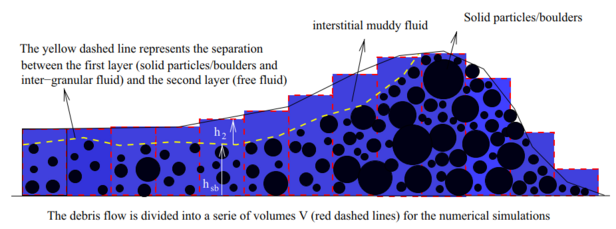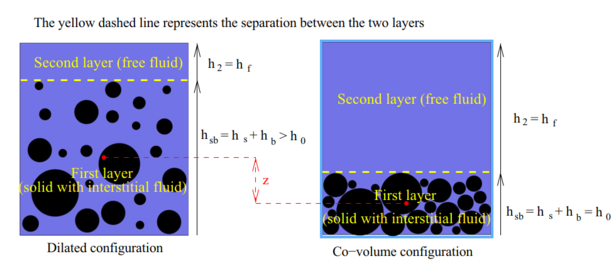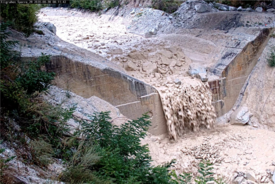We propose a dilatant, two-layer debris flow model validated by full-scale density/saturation measurements obtained from the Swiss Illgraben test site. Like many existing models, we suppose the debris flow consists of a matrix of solid particles (rocks and boulders) that is surrounded by muddy fluid. However, we split the muddy fluid into two fractions. One part, the inter-granular fluid, is bonded to the solid matrix and fills the void space between the solid particles. The combination of solid material and inter-granular fluid forms the first layer of the debris flow. The second part of the muddy fluid is not bonded to the solid matrix and can move independently from the first layer. This free fluid forms the second layer of the debris flow. During flow the rocky particulate material is sheared which induces dilatant motions that change the location of the center-of-mass of the solid. The degree of solid shearing, as well as the amount of muddy fluid and of solid particles, leads to different flow compositions including debris flow fronts consisting of predominantly solid material, or watery debris flow tails. De-watering and the formation of muddy fluid washes can occur when the solid material deposits in the runout zone. After validating the model on two theoretical case studies, we show that the proposed model is able to capture the streamwise evolution of debris flow density in time and space for real debris flow events.


